Why does the facsimile of the Herrenalb Prayer Book offer a precious insight into the ancient and fascinating art of crafting medieval codices? Let’s find out with Liz Teviotdale.

The facsimile of the Herrenalb Prayer Book has much to offer someone teaching or learning about the making of medieval manuscripts. The manuscript is a Christian prayer book focused on themes—the Passion of Christ and the Virgin Mary—of special interest to the Cistercian order.
In monasteries in the Benedictine tradition—of which the Cistercian order is a part—the cantor is responsible for planning the monastery’s services and arranging for the copying of books, and Zürn is known to have played a part in the creation of a dozen manuscripts for his community between 1468 and 1499.
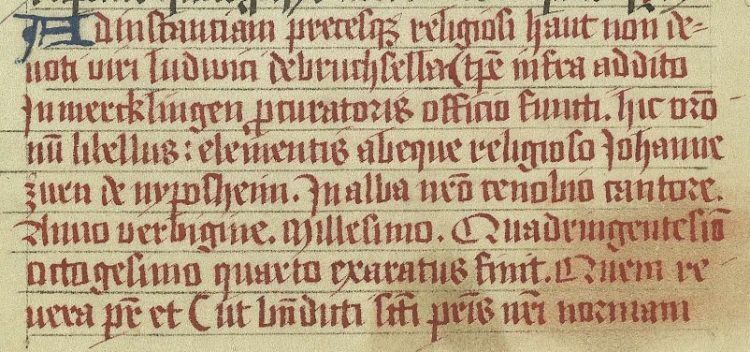
Text Written by a Cistercian Monk
Zürn wrote the lion’s share of the manuscript’s text (fols. 1v-66r and 101r-103v), leaving twenty-nine pages near the end blank so that others could add prayers, which a second scribe did (fols. 66v-68r).
As was customary throughout the period in which illuminated books were made by hand, the text was written first on unbound sheets of parchment that would later be folded in half, grouped into bundles, and sewn together at the spine. The writing of the Herrenalb manuscript began in 1482, the date that appears at the end of the Hours of Cross, the first of the book’s devotional texts (fol. 26r).

Writing with a Metal Stylus
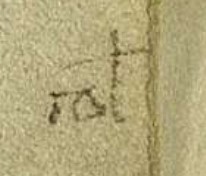
Someone—presumably Zürn, although it is difficult to say for certain—left cues in the outer margin for whoever wrote the rubrics (the headings in red that label texts or describe ritual actions). Only one has survived (fol. 67r). It is not written with quill and ink in the formal script of the main text but rather in a less formal script with a metal stylus leaving a light mark spelling col with an abbreviation mark through the l.
And the scribe writing in red correspondingly wrote col with an abbreviation mark, an unusual Latin designation for the prayer it introduces.

Collaboration with Urban Artists
Most of the text was probably written before the manuscript was illuminated, and we know from the colophon that the book was not finished until 1484 (fol. 103r-v). Although the manuscript was written in the monastery, the illumination was surely contracted out to secular painters working in a city in the northern upper Rhineland, perhaps Mainz or Speyer, or Strasbourg in Alsace.
As he wrote, Zürn reserved square areas 4 text lines high for initials to be painted later at the left edge of the writing area. He routinely indicated the letter to be painted there in the outer margin of the page. For example, on the page that has the cue for the rubric, he wrote an a in the outer margin for the painted initial A of Ave facies domini.

Zürn also left whole unruled pages blank, many destined to receive full-page miniatures. A series of instructions for the artists about the placement and subjects of the miniatures are at the very tops of the pages on which they survive.
The simple phrase von dem crutz genommen (“taken from the cross’) appears at the very top edge of the page with the miniature of the Descent from the Cross (fol. 22r).

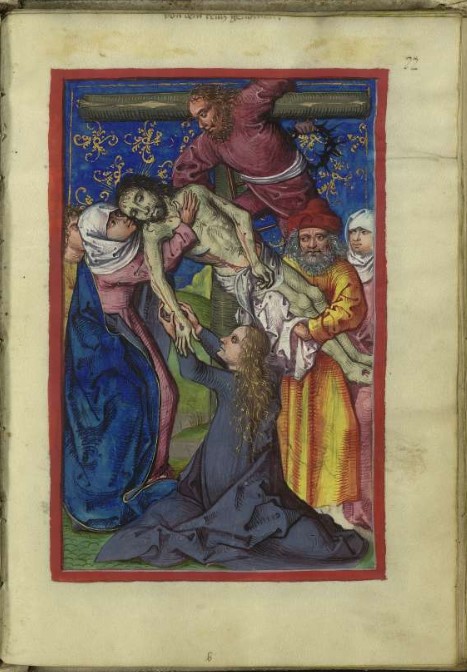
Jewish High Priest in Place of the Roman Governor
The picture instructions were not always followed. The phrase fur pylato gefort (“brought for Pilate”) elicited a representation not of Christ before Pilate but of Christ before the Jewish high priest Annas, subjects often confused and that can be difficult to distinguish from one another (fol. 11r).

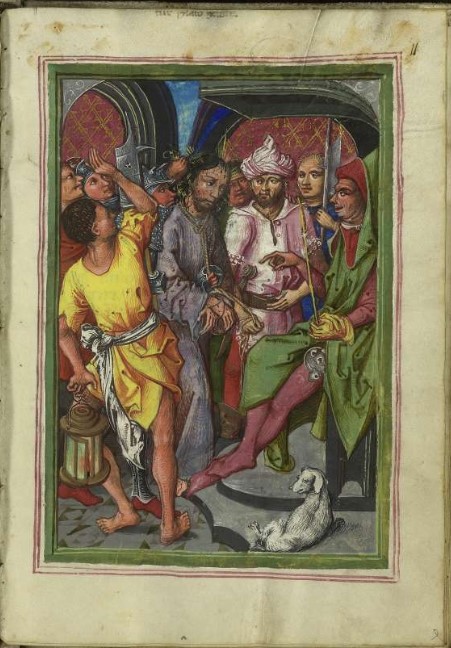
Veronica’s Veil without Veronica
The instruction for a miniature of Saint Veronica with her miraculous image of Christ’s face (s veronica mit dem antzlitt) prompted a miniature of Veronica’s veil held by angels, but the saint is not represented (fol. 66v).

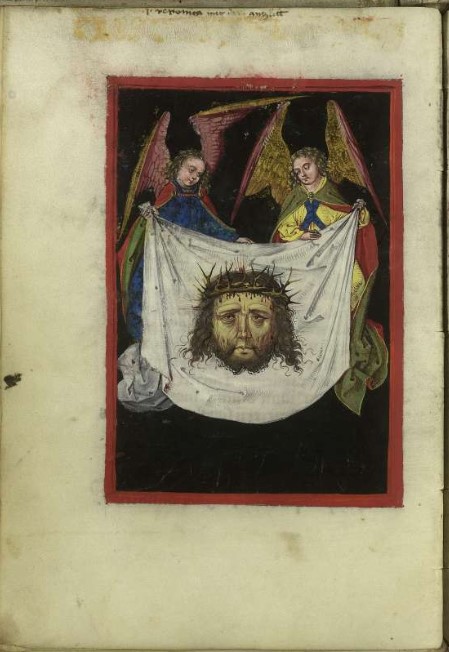
A Change in Plan
One instruction was ignored in favor of a very different solution. No miniature was painted on the page (fol. 27r) with the instruction da er maria magdalena . . . (“then he [revealed himself to] Mary Magdalene”) for the Noli Me Tangere (“Do not touch me”), an appropriate subject to follow the miniature of the Resurrection on the previous page.

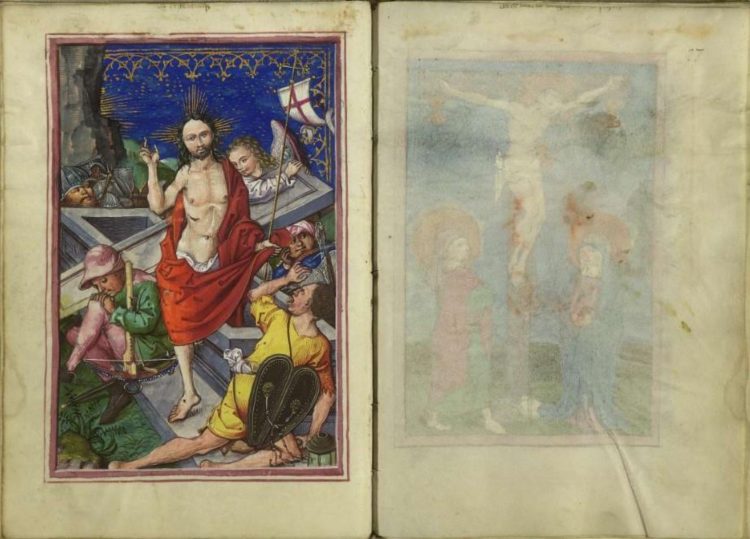
Instead, a miniature showing Christ on the cross between the Virgin and Saint John with angels collecting Christ’s blood in golden chalices was painted on the other side of the leaf (fol. 27v). This miniature does not continue the narrative sequence of the preceding scenes but instead introduces the following text.
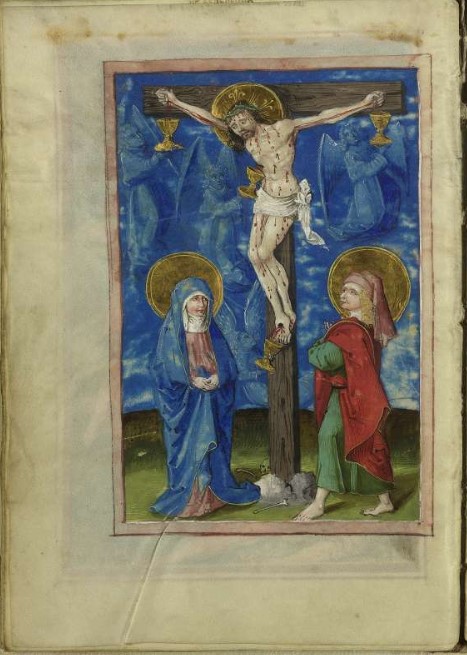
Maintaining Proper Order
Finally, as an aid to assembling the gatherings of folded leaves onto sewing supports (which create the bumps on the spine of a manuscript), catchwords were included in the bottom margin of the last page of each gathering. In the Herrenalb manuscript, some of these were manifestly written by Zürn as he copied the text, and others appear to have been added closer to the time of binding.
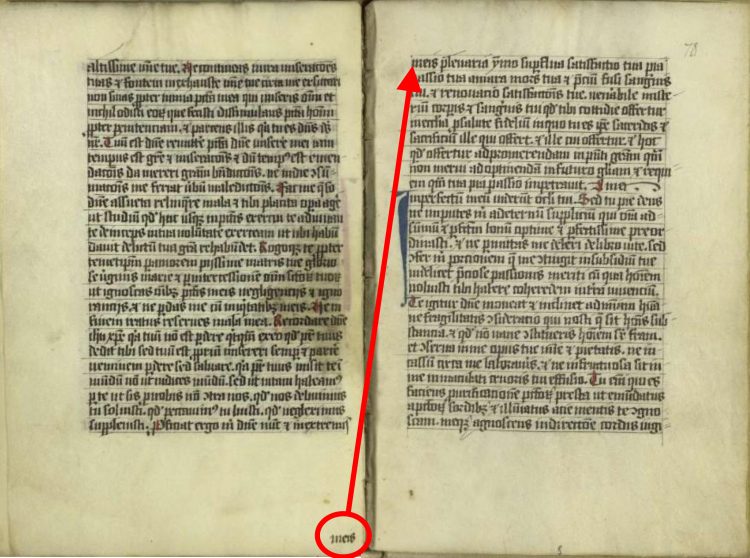
There is much more of interest to be found in the Herrenalb Prayer Book, not least the relationship of its Passion miniatures to the nearly contemporary engravings by Martin Schongauer that served as their models.
Heinzer, Felix. “Andacht in Wort und Bild zum ‘Herrenalber Gebetbuch’ von 1482/84.” Zeitschift für Württembergische Landesgeschichte 62 (2003): 85-99; reprinted as “Andacht in Word [sic] und Bild zum ‘Herrenalber Gebetbuch’ von 1482/84,” in Klosterreform und Mittelalterliche Buchkultur im deutschen Südwesten, 464-81. Studien und Texten 39. Leiden and Boston: Brill, 2008.
Ruiz García, Elisa. Devocionario Cisterciense de Herrenalb: Ms. Theol. Lat. quart. 9 de la Staatsbibliothek Preußischer Kulturbesitz de Berlin. Madrid: Millennium Liber, 2023.

